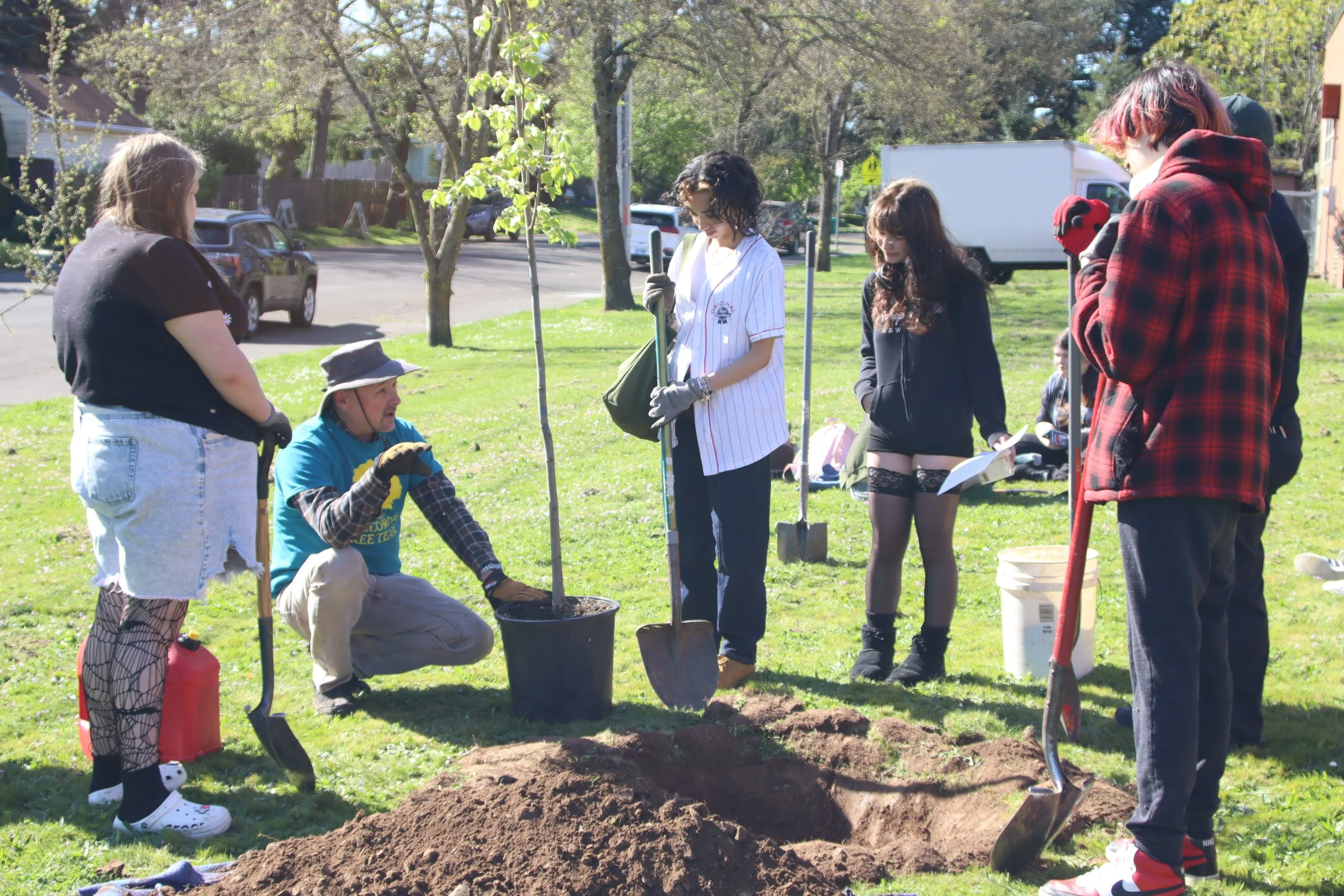New trees added to Learning Landscapes at former Meek School
Anyone bringing their kids or dogs to play at Alliance High School (formerly Meek Elementary) might notice some new trees planted this spring by the Concordia Tree Team.
Jim Gersbach, a member of the Concordia Tree Team, explains to students how best to plant a container-grown tree.
In the front of the school is a small Japanese raisintree (Hovenia dulcis). This deciduous tree gets its name from the fleshy stalks which hold the fruit. Although the fruit is not edible, the structures holding them are sweet-tasting and can be eaten raw or cooked. Dried, they look like raisins and have a similar taste. Despite its name, the tree grows in many parts of Asia besides Japan, including Korea, China, Thailand and into the Himalayas.
A student waters the newly planted Sterling silver linden.
On the east side of the school, students from the high school helped plant two new lindens. These join the row of littleleaf lindens (Tilia cordata) along NE 41 st that were planted many years ago before an arboretum was created at the school. The first is a cultivar of silver linden called Sterling (T. tomentosa ‘Sterling’). The underside of the large leaves of this linden are a light color, giving it a silvery appearance when the wind blows the leaves and makes the undersides more visible. Native to SE Europe and Asia Minor, the tree can grow to 45 feet or taller. Its flowers are fragrant and produce nectar that attracts bees and other pollinators in early summer.
Flowering later than other lindens (in July and August) is the Henry linden. Native to China, it was first brought to the attention of Western botanists by Irish plantsman Augustine Henry in 1888. It came into European cultivation in 1901. Although slow growing it can eventually reach 65 feet in height. Its flowers also provide a welcome source of nectar for pollinators when few other trees are flowering.
Concordia Tree Team member Autumn Voirol waters a newly planted bambooleaf oak at Alliance High School.
On April 19 a bambooleaf oak (Quercus myrsinifolia) was planted about 60 feet west of the soccer field. Obtained from Plant Oregon Nursery in southern Oregon, this evergreen tree has long, narrow unlobed leaves very different from the red oaks most Americans associate with oak trees. They emerge a pale bronze red color before fading to green. The bark is smooth. The species grows across a wide swathe of Asia, from Thailand, Laos and Vietnam north to China, Korea and Japan.
China is also home to another new tree planted April 19 at Meek along the north fenceline. The Chinese ironwood (Parrotia subaequalis) has deciduous leaves that turn a dark red in autumn. It was recently recognized as the only other species in the genus Parrotia. The other species is P. persica from the mountains of Iran and Azerbaijan. Both appear to be relict species that once had wider distributions before the glacier advances of the Ice Age.
Alliance High School student digging a hole for the new Sterling silver linden on April 19.



